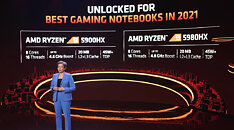Mar 21st, 2025 11:04 EDT
change timezone
Latest GPU Drivers
New Forum Posts
- Cooling problems persist on LGA1700 (90)
- GPU Review Test System 2025.2 Games & Planning (0)
- GameTechBench GPU benchmark is already out! (337)
- Have you got pie today? (16641)
- WCG Daily Numbers (12807)
- TPU's Rosetta Milestones and Daily Pie Thread (2250)
- HalfLife2 RTX Demo Is out! (273)
- Windows 10 Vs 11, Which one too choose? (29)
- Folding Pie and Milestones!! (9437)
- anyone replace capacitors on a component? (7)
Popular Reviews
- ASRock Radeon RX 9070 XT Taichi OC Review - Excellent Cooling
- be quiet! Pure Base 501 LX Review
- Sapphire Radeon RX 9070 XT Nitro+ Review - Beating NVIDIA
- AMD Ryzen 9 9950X3D Review - Great for Gaming and Productivity
- Corsair SF750 750 W Review
- MSI MAG B860 Tomahawk Wi-Fi Review
- ASUS GeForce RTX 5070 TUF OC Review
- XFX Radeon RX 9070 XT Mercury OC Magnetic Air Review
- ASUS Radeon RX 9070 TUF OC Review
- MSI GeForce RTX 5070 Gaming Trio OC Review
Controversial News Posts
- NVIDIA GeForce RTX 50 Cards Spotted with Missing ROPs, NVIDIA Confirms the Issue, Multiple Vendors Affected (519)
- AMD RDNA 4 and Radeon RX 9070 Series Unveiled: $549 & $599 (260)
- AMD Mentions Sub-$700 Pricing for Radeon RX 9070 GPU Series, Looks Like NV Minus $50 Again (250)
- NVIDIA Investigates GeForce RTX 50 Series "Blackwell" Black Screen and BSOD Issues (244)
- AMD Radeon RX 9070 and 9070 XT Official Performance Metrics Leaked, +42% 4K Performance Over Radeon RX 7900 GRE (195)
- AMD Radeon RX 9070-series Pricing Leaks Courtesy of MicroCenter (158)
- MSI Doesn't Plan Radeon RX 9000 Series GPUs, Skips AMD RDNA 4 Generation Entirely (142)
- Microsoft Introduces Copilot for Gaming (123)
Wednesday, January 13th 2021

AMD "Cezanne" Confirmed to Quadruple Max Addressable L3 Cache Per Core Over "Renoir"
At her 2021 International CES keynote address, AMD CEO Dr. Lisa Su announced the Ryzen 5000 series mobile processor family, which the company thinks has what it takes to beat Intel's 11th Gen Core "Tiger Lake" processor, possibly even its upcoming 8-core version. The Ryzen 5000 mobile processor is based on the new 7 nm "Cezanne" monolithic SoC die. This chip features an 8-core CPU based on the latest "Zen 3" microarchitecture, and its biggest change is the advent of the 8-core CCX, which means all eight cores on "Cezanne" share a common L3 cache.
AMD slides from the CES keynote confirm that the company has not only doubled the L3 cache amount compared to "Renoir," but also quadrupled the maximum addressable L3 cache per core. On "Renoir," the eight cores are split between two CCXs, each with 4 MB of L3 cache. "Cezanne" features a single 8-core CCX with 16 MB of it. The dedicated L2 cache amount remains at 512 KB per core. The "total cache" (L2+L3) adds up to 20 MB. For the 45-Watt Ryzen 5000 HX-series enthusiast mobile processors, the increased caches, coupled with improved IPC and higher clock speeds should be AMD's play against Intel's top H-segment mobile chips. AMD claims that the second-fastest Ryzen 9 5900HX beating Intel's fastest Core i9-10980HK by 13% in raw single-thread performance, 19% in game physics performance, and 35% in overall PassMark performance. The 5980HX should only end up faster.
AMD slides from the CES keynote confirm that the company has not only doubled the L3 cache amount compared to "Renoir," but also quadrupled the maximum addressable L3 cache per core. On "Renoir," the eight cores are split between two CCXs, each with 4 MB of L3 cache. "Cezanne" features a single 8-core CCX with 16 MB of it. The dedicated L2 cache amount remains at 512 KB per core. The "total cache" (L2+L3) adds up to 20 MB. For the 45-Watt Ryzen 5000 HX-series enthusiast mobile processors, the increased caches, coupled with improved IPC and higher clock speeds should be AMD's play against Intel's top H-segment mobile chips. AMD claims that the second-fastest Ryzen 9 5900HX beating Intel's fastest Core i9-10980HK by 13% in raw single-thread performance, 19% in game physics performance, and 35% in overall PassMark performance. The 5980HX should only end up faster.
Mar 21st, 2025 11:04 EDT
change timezone
Latest GPU Drivers
New Forum Posts
- Cooling problems persist on LGA1700 (90)
- GPU Review Test System 2025.2 Games & Planning (0)
- GameTechBench GPU benchmark is already out! (337)
- Have you got pie today? (16641)
- WCG Daily Numbers (12807)
- TPU's Rosetta Milestones and Daily Pie Thread (2250)
- HalfLife2 RTX Demo Is out! (273)
- Windows 10 Vs 11, Which one too choose? (29)
- Folding Pie and Milestones!! (9437)
- anyone replace capacitors on a component? (7)
Popular Reviews
- ASRock Radeon RX 9070 XT Taichi OC Review - Excellent Cooling
- be quiet! Pure Base 501 LX Review
- Sapphire Radeon RX 9070 XT Nitro+ Review - Beating NVIDIA
- AMD Ryzen 9 9950X3D Review - Great for Gaming and Productivity
- Corsair SF750 750 W Review
- MSI MAG B860 Tomahawk Wi-Fi Review
- ASUS GeForce RTX 5070 TUF OC Review
- XFX Radeon RX 9070 XT Mercury OC Magnetic Air Review
- ASUS Radeon RX 9070 TUF OC Review
- MSI GeForce RTX 5070 Gaming Trio OC Review
Controversial News Posts
- NVIDIA GeForce RTX 50 Cards Spotted with Missing ROPs, NVIDIA Confirms the Issue, Multiple Vendors Affected (519)
- AMD RDNA 4 and Radeon RX 9070 Series Unveiled: $549 & $599 (260)
- AMD Mentions Sub-$700 Pricing for Radeon RX 9070 GPU Series, Looks Like NV Minus $50 Again (250)
- NVIDIA Investigates GeForce RTX 50 Series "Blackwell" Black Screen and BSOD Issues (244)
- AMD Radeon RX 9070 and 9070 XT Official Performance Metrics Leaked, +42% 4K Performance Over Radeon RX 7900 GRE (195)
- AMD Radeon RX 9070-series Pricing Leaks Courtesy of MicroCenter (158)
- MSI Doesn't Plan Radeon RX 9000 Series GPUs, Skips AMD RDNA 4 Generation Entirely (142)
- Microsoft Introduces Copilot for Gaming (123)




23 Comments on AMD "Cezanne" Confirmed to Quadruple Max Addressable L3 Cache Per Core Over "Renoir"
I bet Tiger Lake single core would be less flattering than that.
But that is what bothers me about AMD's mobile CPUs - they are still mainly APUs, but their iGPUs haven't made much progress in the last years and are much slower than they could be. I imagine the highest tier Xe-GPUs in Tiger Lake can stand up to them. On the other hand, the IOD in Renoir was quite constrained and tailored to APU-use like in Intel U-CPUs, not to be used with a dGPU, e.g. not even offering 16 PCIe-lanes. Since that doesn't seem to have changed with Cezanne, Intel H-CPUs are much better for that.These are not Cezanne, but Lucienne, a Renoir-Refresh. Lets hope they won't show up on retail market to confuse everyone.
Second evidence, AMD cut CU count from 10 CU 640SP Ryzen 7 3700U to 7 CU 448SP Ryzen 7 4700U and yet we see any detrimental performance.
Are we see a pattern here? :DAnd what do you propose to fill 15W budget? :p
Now that the RDNA for Samsung is announced for 2022, I expect some goodies from AMD in the mobile PC market too.
I said the iGPUs in Renoir and Cezanne are lackluster an due to having less CU are only just as fast as in Picasso because of slight tweaking and higher clockrates. They are kind of useless because of this and even the slowest dGPU licke MX350 and MX450 are way faster.
Now since Cezanne seems to be on par with Tiger Lake CPU wise, it is a shame Tiger Lake-H will be better suited to connect fast dGPUs, since Renoir and Cezanne only have very limited PCIe-Lanes.
Right now here in Germany, only a handful of AMD notebooks pair Renoir with RTX 2060 and Max-Q, but none with anything better, while there are more Intel 10th Generation notebooks with any RTX 20x0-card. Ice Lake ist only available with up to a GTX 1650Ti and Tiger Lake with a 1660Ti Max-Q, but this is to be expected since they have only been available as SoP with just 4 PCIe-Lanes.
Just running these APU with LPDDR4 4267 instead of DDR3200 make a huge difference. APU are bandwidth starved, and since they are aimed a the lower end of the market, (or made to be replaced by a dedicated GPU on higher model), there is no point of making them 4 channel.
DDR5 might bring an increase in performance, larger cache on die also might also greatly help. But there will need to be a commitment to make a very large APU. Renoir have a die size of 156mm square for 8 core, 2x64 DDR4 channel and all the other stuff (PCI-E, usb,etc). a RX 5500 XT have a die size of 158 mm for 22 compute unit, 128 bit memory channel and all the other stuff. On renoir, the 8 vega core almost take half the die size already.
So to get a really powerful APU, they would have to commit to a very large die size that won't be cheap. (less dies per waffer, higher chance of defect).
i am not sure right now what would be the performance impact of replacing these cores with RDNA2 core by example(without infinity cache). The gain might not be good enough to be worth it for now.
But a good indication of that is all APU that will have NAVI/RDNA gpu are on DDR5/LPDDR5 ...
AMD certainly made that decision for good reason.
- in 2011 we had Llano and HD6000 Radeons, which were both mostly based on Terrascale2. The best iGPU HD6620G had the same configuration as HD6530M/6550M, albeit with lower clockrates.
- Trinity in 2012 and Richland in 2013 were all Terrascale3, which never got any dGPU-Releases apart from HD69x0
- Kaveri in 2014 had GCN1.0, but with 3/4/6/8CU-Configurations. There were 8CU-dGPUs, but in 2012 (HD77x0) and 2016 (R7 M465X). There were a lot of 6CU dGPUs in 2013-2016 (HD85x0M-87x0M, R7 M26x0/M360/M46x
- Carizzo and Bristol Ridge in 2015/16 had GCN1.2 in 4/6/8CU-Configurations (see above)
- Raven Ridge and Picasso in 2017-2019 already had GCN5.0/VEGA in 3/6/8/9/10/11CU-Configurations, only Radeon 540/640 with an 8CU-Polaris 23 would have had a similar configuration, but with GCN4.0
And that's were we are, we haven't had the same Generation of any µarch in iGPU and dGPU since Ryzen, Crossfire is dead, but multi-GPU is supported natively in some Games via DX12 and Vulkan. All we got in regards to AMD APUs working together with AMD dGPUs is smart shift.
Key here is 15W and price, after you increase cTDP ( which also bumping clock or adding core in AMD case) , iGPU became unattractive. I believe 15W Ryzen 5 5600U paired with GTX 1650 MaxQ will fare better than 35W Ryzen 5600HS with Vega.
Samsung RDNA build on ARM architecture, it is very unlikely to enter x86 turf.I thought I made a good point there. I think we all agree to some point that Intel UHD is lousy iGPU, but Intel has CPU power at its disposal, so "stronger" Vega hindered by its own CPU. I already made an example, Ryzen 7 4700U barely match i5-10210U ( in eSport games) despite core count and graphic core advantage. AMD trying to address their weakest point, single threading, with these 5000 series CPU.
MX350 has 20W TDP, in wild fantasies it will fit in H-SKU such as 35W 5600HS assuming that was just 15W 5600U+20W MX350. But then again, how will you put 640 core 135mm² in same package? Are they still perform better when it shared its "limited LPDDR4x 4266" memory bandwith with CPU?